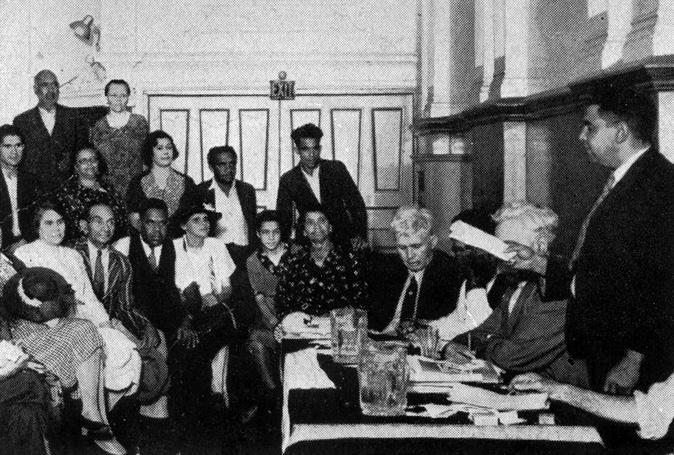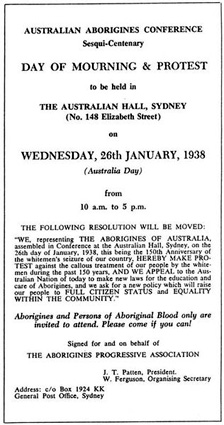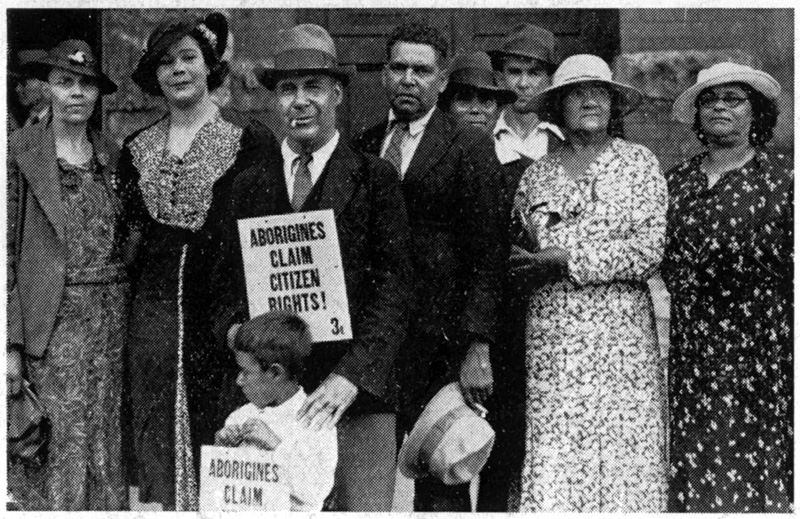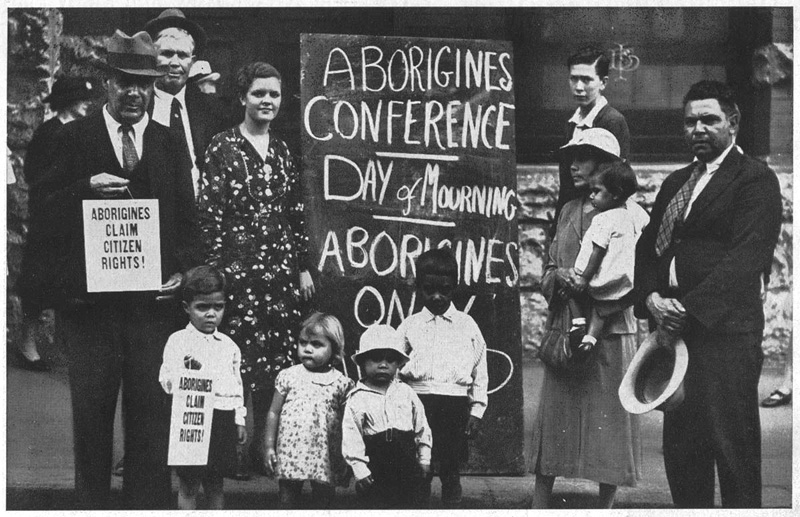


| . |
The Day of Mourning was a day of protest held by Aboriginal Australians on 26 January 1938, the sesquicentenary of British colonisation of Australia. It was declared to be a protest of 150 years of callous treatment and the seizure of land, and was designed to stand in contrast to the Australia Day celebrations held by the European population on the same day.
Organisation
The Day of Mourning protests were organised by the Australian Aborigines League (AAL), based in Victoria and led by William Cooper, and the Aborigines Progressive Association (APA), based in New South Wales and led by Jack Patten. In 1888, the centenary of British colonisation, Aboriginal leaders had simply boycotted the Australia Day celebrations. However, this had been ignored by the media.
These groups had also sent petitions to the Government of Australia and the Government of the United Kingdom, in the early 1930s, for the recognition of Aboriginal civil rights (including Aboriginal representation in the Parliament of Australia), but they had been ignored or dismissed without serious attention, and each had refused to pass the petitions on to King George V. As a result, a more proactive event was planned for the sesquicentenary, which the media and governments could not ignore. This was despite recent experience of the New South Wales Police engaging in general intimidation of public meetings of such political organisations.
Despite having rejected the APA's petition, Prime Minister Joseph Lyons did agree to meet with the Day of Mourning leaders on the 25 January, without any other government officials or media present. However, some media reports at the time attributed this more to Lyons' desire to meet Pastor Doug Nicholls, who was an Australian rules football player for Fitzroy Football Club at the time, than to any desire to constructively negotiate.
The day began with a march through the streets of Sydney, which was attended by both Aboriginal people and non-Indigenous supporters. The march began at the Sydney Town Hall, and concluded at the major event on the day, the Day of Mourning Congress, a political meeting for Aboriginal people only. It attracted many major Aboriginal leaders, including Pearl Gibbs and Margaret Tucker. The protesters had originally intended to hold the Congress in the Sydney Town Hall, but they were refused access, and instead held it at the nearby Australian Hall in Elizabeth Street. They were not allowed in through the front door and were told they could only enter through the rear door.
The Congress was open to all Aboriginal people, and about 1,000 people attended, making it one of the first mass civil rights gatherings. The APA and AAL distributed a manifesto at the meeting, Aborigines Claim Citizens' Rights, produced by Patten and APA secretary William Ferguson. The manifesto opened with a declaration that "This festival of 150 years' so-called 'progress' in Australia commemorates also 150 years of misery and degradation imposed on the original native inhabitants by white invaders of this country."
|
   |
 |
 |
 |
| References
1. "Mr Lyons Only White Man At Blacks' Deputation". The Koori History Website. 2. Burgmann, Verity (2003). Power, Profit and Protest. Allen & Unwin. ISBN 1-74114-016-1. 3. "Australia Day - History". Australia Day Council New South Wales. Archived from the original on August 28, 2005. http://web.archive.org/web/20050828204122/http://www.australiaday.com.au/history.html. Retrieved September 30, 2005. 4. "Proclamation of the Day of Mourning". The Koori History Website. |